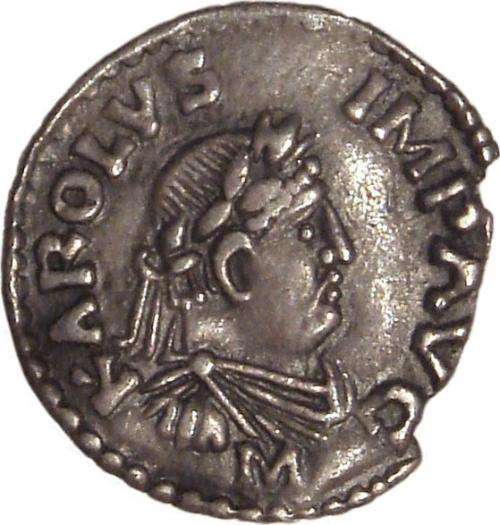February 4, 2014 report
German researchers near certain remains are those of Charlemagne

(Phys.org) —A team of German researchers has announced to the press that the bones they have been studying for almost 26 years are almost certainly those of Charlemagne, the first ruler of the Holy Roman Empire.
Charlemagne is an historic figure as many consider him to be the father of modern Europe—he managed to forge the first empire in Europe (it included most of Western Europe) after the demise of the Roman Empire. Adding to his stature is that he reportedly personally led most of the 53 campaigns that led to his empire being built. Today, the monarchies in both Germany and France consider their realms to be direct descendants of the empire Charlemagne built.
Charlemagne based his empire out of what is now a western part of Germany—he died in his early seventies (in 847 reportedly from high fever or pneumonia) in the town of Aachen, which is where it's believed he was buried. His sarcophagus has been sitting in Aachen Cathedral for 1200 years—it was only in 1988 that a team of researchers secretly opened its lid to reveal 94 bones that are believed to have belonged to the famous leader. The researchers also discovered bones in a golden bust that were believed to belong to him as well. Both collections have been the subject of intense scrutiny ever since.
After careful analysis, the researchers report that the bones belonged to a man very nearly the same height as Charlemagne was reported to be—slightly over six feet tall—which was extremely unusual for that time (also unusual was that his father was known as Pepin the Short because he was only about five feet tall). The bones also came from a very thin man, which Charlemagne was also reported to be. Also, writings from the time suggest that the leader walked with a limp in his later years—the researchers report scaring on knee and ankle bones which likely caused their owner to limp.
The researchers obviously can't prove without a shadow of a doubt that the bones they've been studying are indeed those of Charlemagne, but insist that there is a "great likelihood" that they are, based on their research efforts.
More information: via TheLocal.de
© 2014 Phys.org





















